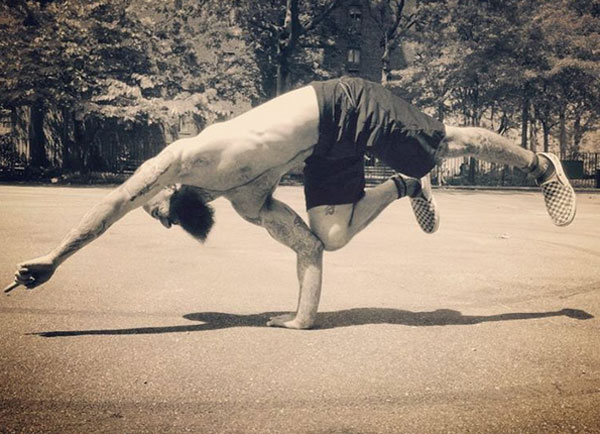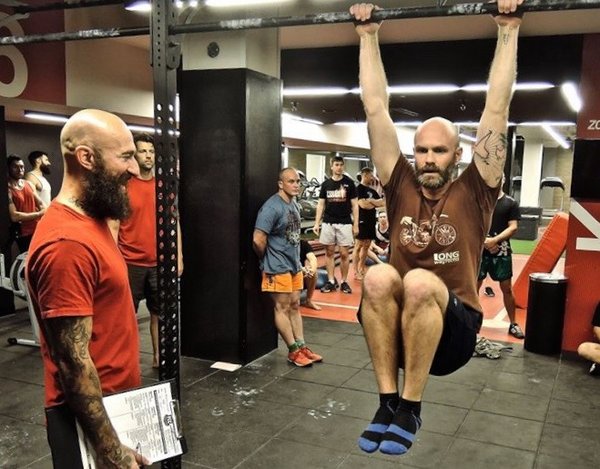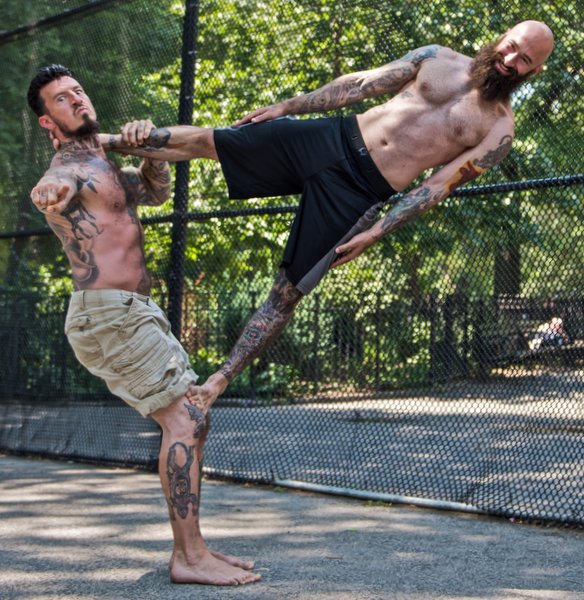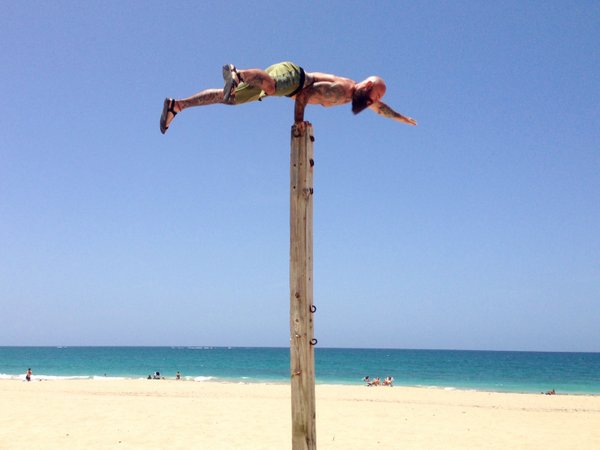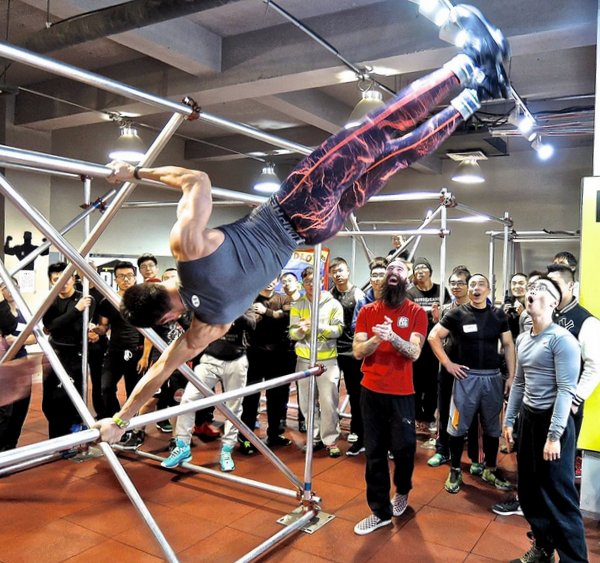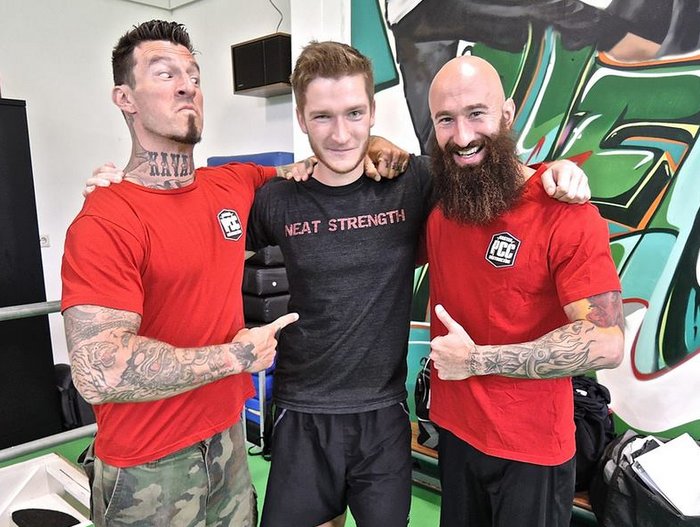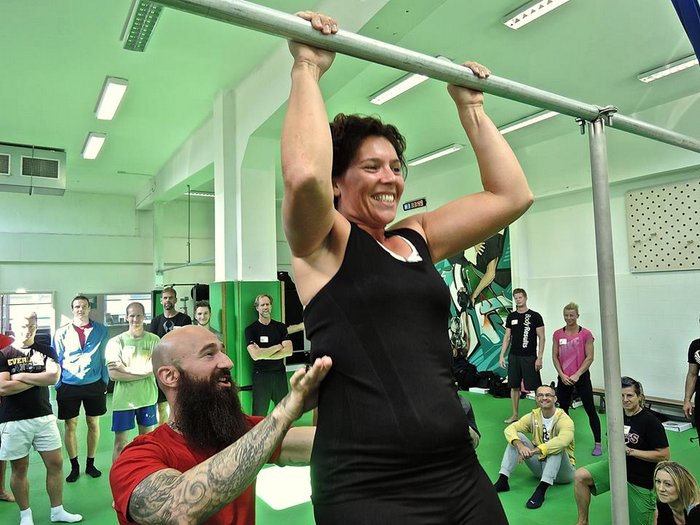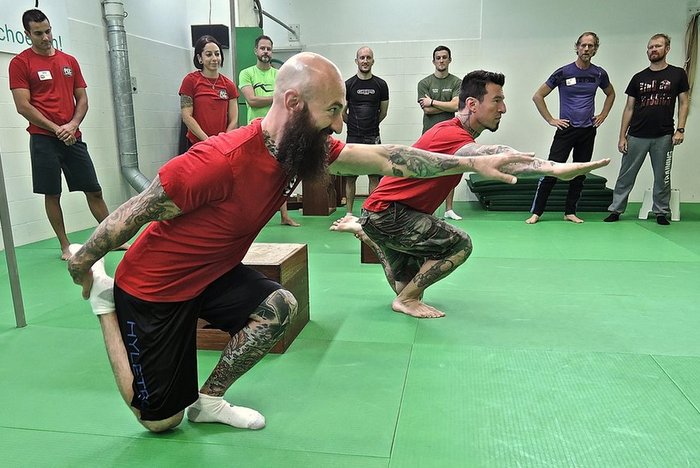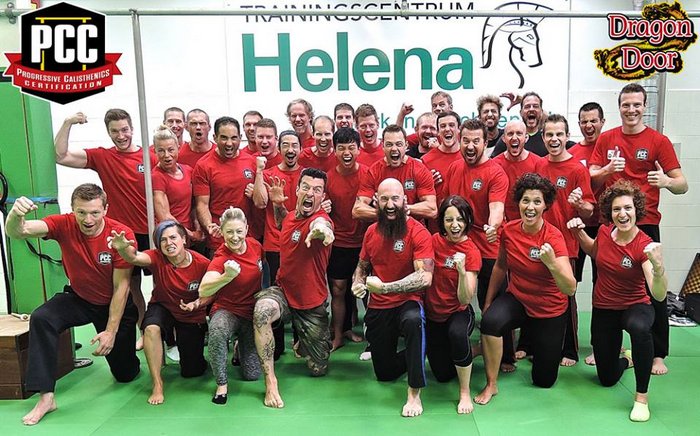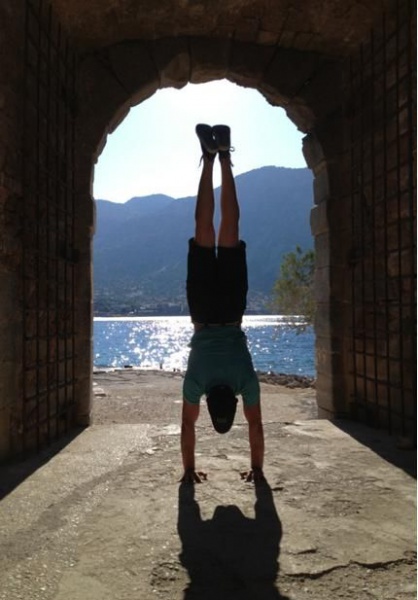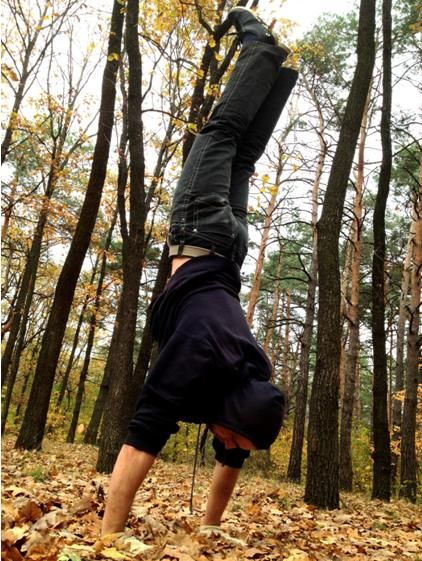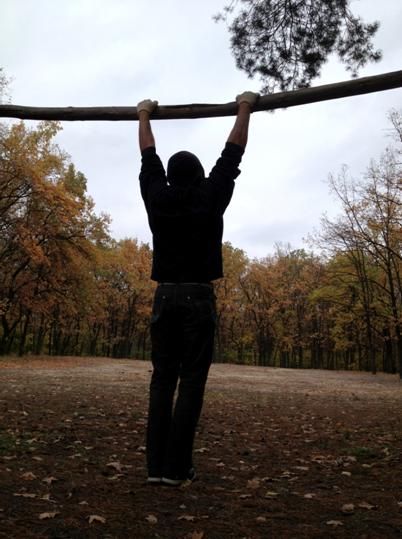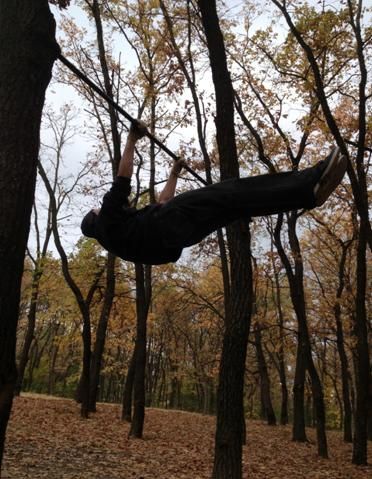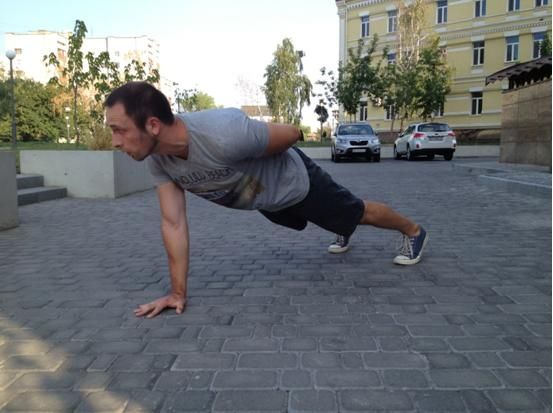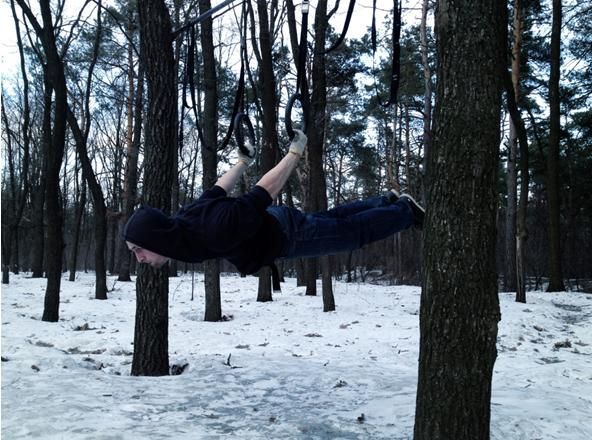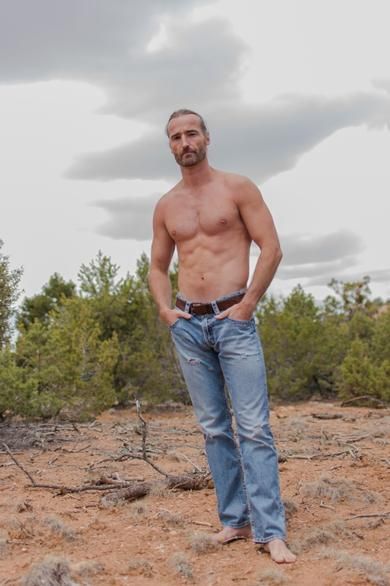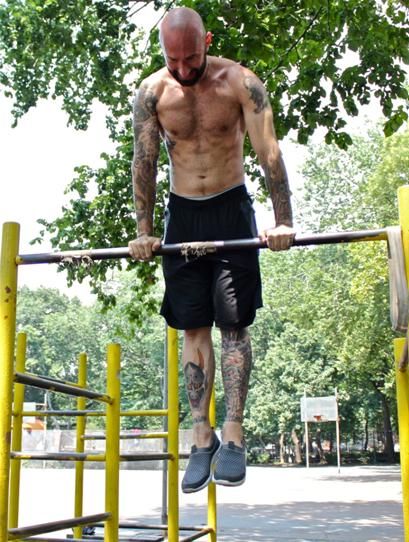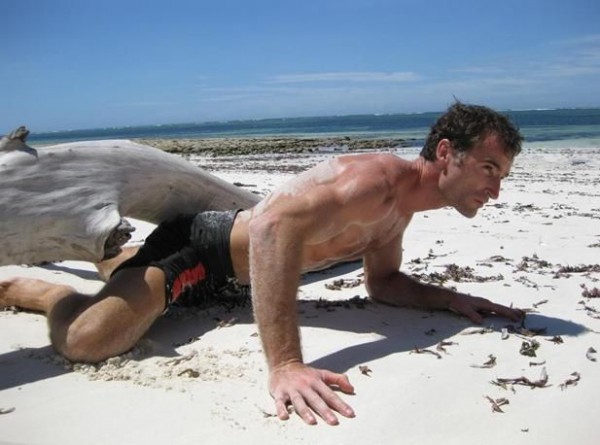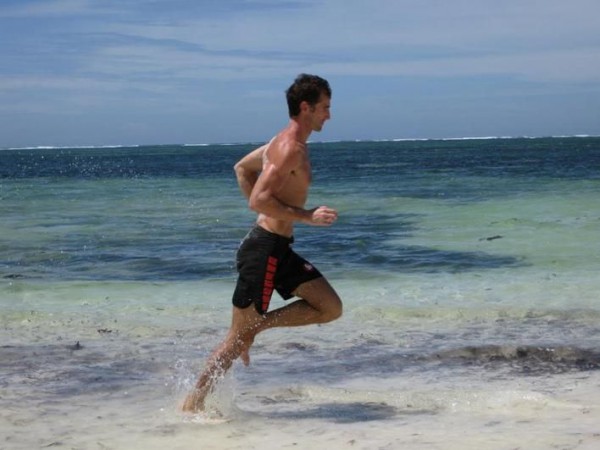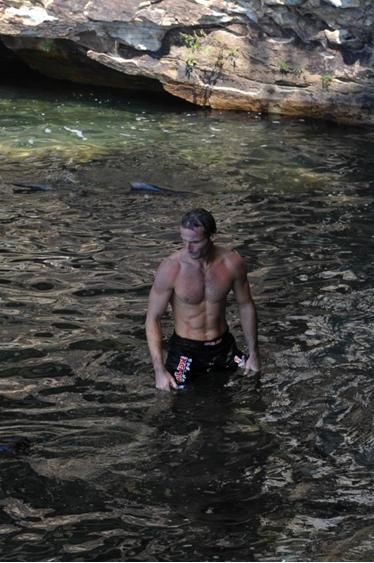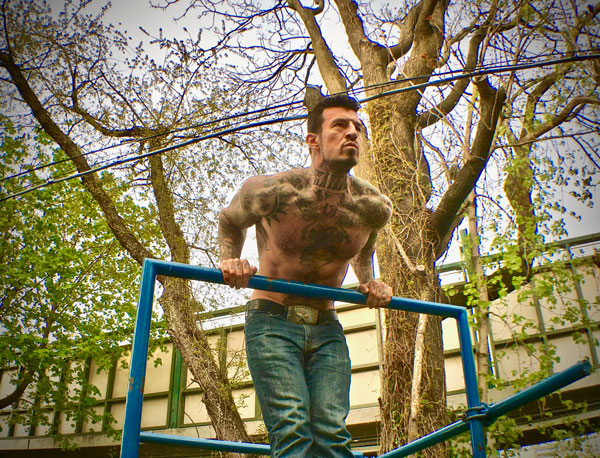
One of the things I love most about Progressive Calisthenics is the fact that it is a multi-faceted discipline.
You see, we human beings have a tendency to over-categorize and compartmentalize just about everything. Sadly, this can lead to an improper representation of concepts that can often be better expressed with blurred lines. In other words, not every peg fits so squarely into a hole.
An imaginary, over-lapping Venn diagram comes to my mind when I consider the virtuosity of the muscle-up. It’s a proverbial chameleon of classification. Is a muscle-up strength training or skill development? Conditioning work or muscle building? Power or control? Well, friends, the mighty muscle-up is all of the above and more!
In fact, this ultimate bar experience is the perfect fusion of raw strength and refined technique. It’s an upper body exercise that recruits full body harmony, firing up your muscles while also getting your heart racing. The muscle-up is the only upper-body move in the calisthenics kingdom that employs a push and a pull: it resembles a pull-up that transitions into a dip. But there is a lot more that goes into it. Dare with me if you will…
In The Beginning
If you consult the internet, you are sure to come across a multitude of memes portraying very fit individuals who make the muscle-up look easy. It’s not. To be clear, this is an advanced exercise and a solid foundation in the basics in necessary before exploring it.
On that note, people sometimes think there is a hidden trick or a “hack” to performing a muscle-up. There isn’t. It takes work. While the information detailed ahead will undoubtedly help your training and technique, I recommend that anybody who is serious about muscle-ups be able to a do at least 10 perfect pull-ups, 20 hanging knee raises, 20 dips and 30 push-ups before even attempting to tame this beast.
Get A Grip
Every exercise begins with our contact with the environment. In this case, the way we approach the bar is very important. To perform a muscle-up, position your hands only slightly wider than the width of your shoulders. Yes, this is narrower than you would typical place them for a pull-up. Keeping your hands closer together will help you bring the bar lower down on your body when you initiate the movement.
If you are new to muscle-ups, then use an overhand grip. (Again, this is unlike the pull-up, where beginners generally favor an underhand grip.) In fact, for many people, an exaggerated overhand grip, with the hands cocked over the bar as much as possible and the backs of the hands facing straight up at the sky, is preferable. This is sometimes referred to as a “false” grip, and can ease the transition from pulling yourself up, to pressing yourself over the bar.
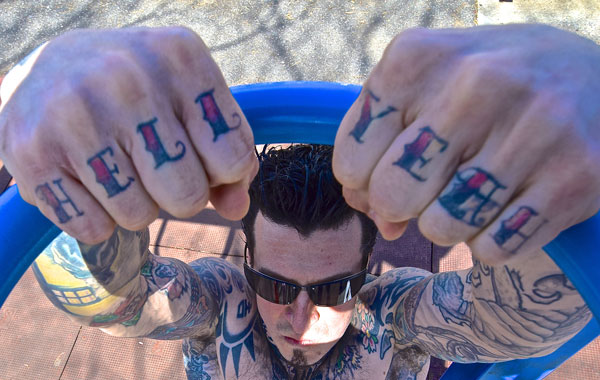
Breaking Down Your Muscle-Up
Pull the bar as low down on your body as you can. Get explosive! Aim to get the bar all the way down to your hips, although it will probably wind up closer to your chest. Use as much speed and force as you can muster up.
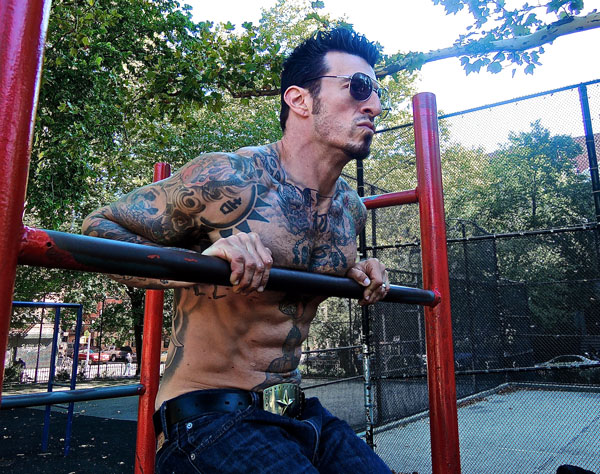
At this point, press your chest forward and around the bar. Aiming to bring your elbows above your wrists will assist you in this transition. It’s also helpful to buck your hips out behind you and extend your legs out in front of you so they can act as a counterweight as you maneuver around the bar.
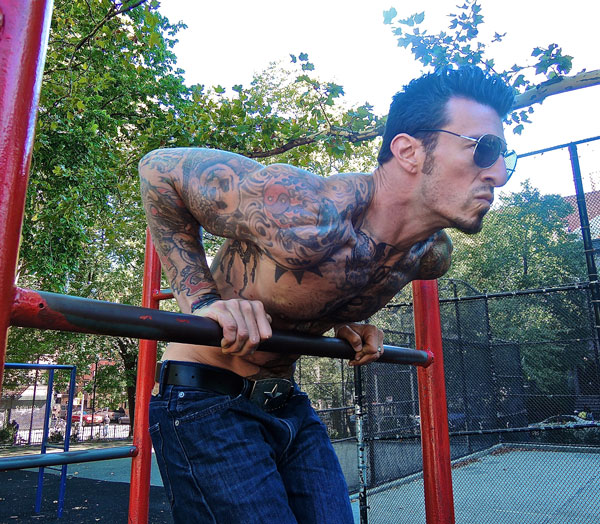
Now press your hands into the bar, extending your elbows and straightening your arms. You want to “dip” yourself up, while maneuvering the bar down. It is not unusual for one arm to go over before the other at first. This asymmetrical act is sometimes referred to as “chicken winging.” While it’s OK to use this avian assist in the early stages (no one’s first is the best), it is something we want to avoid as we develop more strength and skill. Ideally, over the course of time, both arms will go over together like a dip on a single, straight bar.
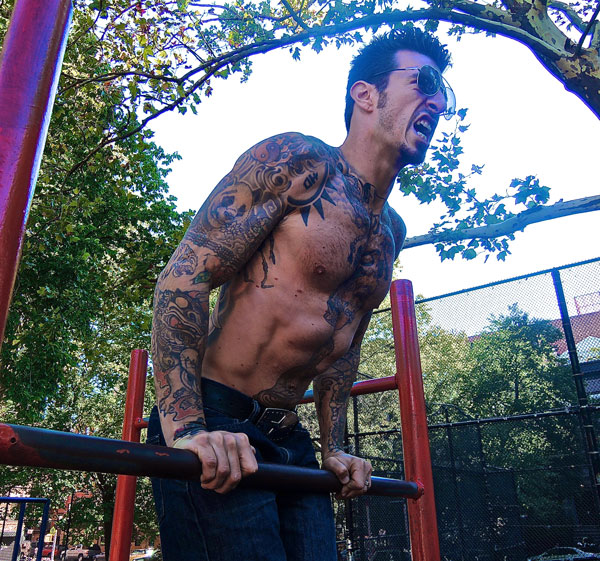
Once you are fully over the bar, you have completed the rep. Although advanced practitioners can train to do slow muscle-ups, generally speaking, all of these steps occur very quickly. Go for one or two reps at a time, so you can remain fresh for each attempt. Eventually, you can increase your reps.
Type Slow Negative
In addition to the above-mentioned explosive pull-ups and straight bar dips, simply practicing the lowering phase of a muscle-up can be helpful, too. Because muscle-ups have a huge neurological component, doing just half of the range of motion (the eccentric half) allows your body to rehearse how it feels spatially to do a muscle-up, without actually doing the muscle-up.
To do so, climb to the top position. You can use a step, a bench or the aid of a training partner. You can even assist yourself by jumping into it. When you’re at the top, pause and engage all the muscles in your body. Now lower yourself down as slowly as you possibly can. Hinge at the elbows and bend at the shoulders, as you lower your chest to the bar. Wring your wrists around the bar and extend your legs forward as you continue your descent. Continue all the way down until you are hanging from the bar. This type of slow, negative muscle-up will give you a taste of the movement pattern. Like all things muscle-up related, it’s harder than it may seem.
Bar None
It can take a great deal of time and energy to achieve your first muscle-up, but the feeling of getting high above that bar is worth it. Take your time, respect the journey and understand that, like many great things, it will require discipline, intensity and consistency. Even after you’ve done your first muscle-up, it may be a while before you do your second. That’s ok. It’s a long road; enjoy the ride. In time, the sky’s the limit!
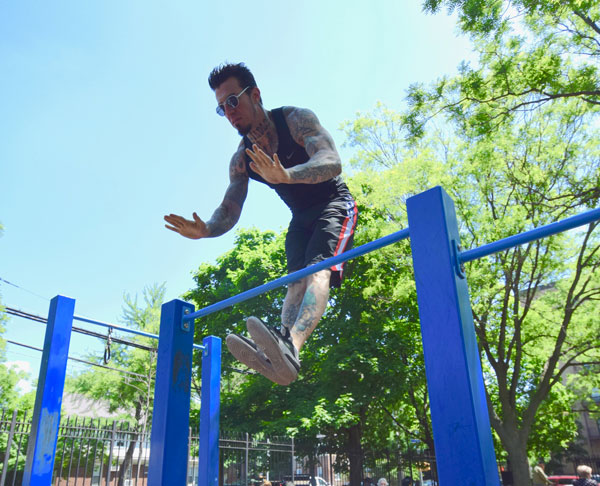
If you’ve experienced any breakthroughs with your muscle-up training, please let me know in the comments section below. Danny wants to hear about it! For that matter, feel free to post any questions you may have about muscle-ups. After all, we’re all a work in progress. I’m looking forward to hearing from you!
Keep The Dream Alive,
-DK
****
Danny Kavadlo is one of the world’s leading authorities on calisthenics, nutrition and personal training. He is the author of several best-selling Dragon Door titles including GET STRONG and STRENGTH RULES. Danny has been featured in the New York Times, Men’s Fitness, and the Huffington Post. He is a regular contributor to Bodybuilding .com and TRAIN magazine. When not working one-on-one with clients in his native New York City, Danny travels the world as a Master Instructor in Dragon Door’s internationally acclaimed Progressive Calisthenics Certification. Find out more about Danny at www.DannyTheTrainer.com
